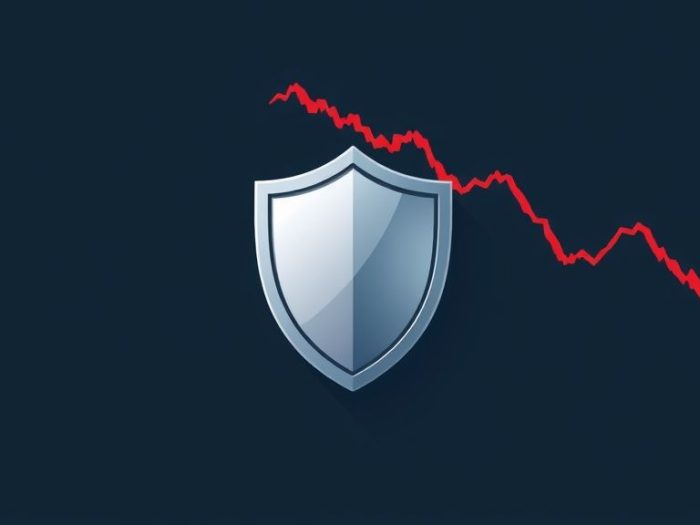Just as you insure your home or car, you can also insure your stock portfolio against
potential losses. Protective puts are a valuable options strategy that acts like an insurance
policy, providing downside protection during market downturns. This article explains how
protective puts work and how to use them effectively.
Understanding Protective Puts
A protective put involves buying put options on a stock or a stock index that you own.
-
Put Option: A contract that gives the buyer the right, but not the
obligation, to sell 100 shares of a stock at a specific price (strike price) by a
specific date (expiration date).
By buying puts, you’re essentially buying the right to sell your stock at a predetermined
price, which can protect your investment value if the stock price declines.
Why Use Protective Puts?
-
Downside Protection: Limits potential losses during market corrections
or crashes. - Peace of Mind: Reduces the emotional stress of market volatility.
-
Flexibility: Allows you to stay invested in the market while
protecting your portfolio.
How to Use Protective Puts
1. Identify Your Holdings
Determine which stocks or stock holdings you want to protect.
2. Choose a Strike Price
Select a strike price at or below the current market price.
-
At-the-Money (ATM) Put: Strike price closest to the current market
price. Offers good protection but is more expensive. -
Out-of-the-Money (OTM) Put: Strike price below the current market
price. Offers cheaper protection but only protects against larger declines.
3. Select an Expiration Date
Choose an expiration date that matches your investment timeframe or the period you want
to be protected.
- Shorter Expiration: Offers cheaper protection but for a limited time.
- Longer Expiration: Provides longer-term protection but is more expensive.
4. Buy Put Options
Place an order to buy the appropriate number of put option contracts. Each contract
represents 100 shares of the underlying stock.
Example
You own 100 shares of XYZ stock, currently trading at $100. You want to protect your
investment against a potential market downturn. You buy one put option contract with a
strike price of $95, expiring in three months.
-
If the stock price drops to $90, your put option will increase in value, offsetting
some of the loss in your stock holdings. -
If the stock price stays above $95, your put option will expire worthless, and your
loss is limited to the premium you paid for the option.
Costs and Considerations
-
Premium: Buying put options involves paying a premium, which reduces
your overall returns. -
Limited Upside: Protective puts don’t prevent you from profiting if
the stock price rises. -
Time Decay: Options lose value over time, especially as expiration
approaches.
Conclusion
Protective puts are a valuable tool for managing risk and protecting your stock portfolio
during market uncertainty. By carefully selecting the strike price and expiration date,
you can tailor your protection to your specific needs and risk tolerance. However, remember
that options trading involves costs and requires a thorough understanding of the risks involved.
Related Keywords
Protective puts, options trading, options hedging, stock market protection, portfolio
insurance, buy put options, options strategy, options trading for beginners, options
trading guide, options risk management.
Frequently Asked Questions (FAQ)
1. What is a protective put?
A protective put is an options strategy where you buy put options on a stock or
stock index that you own to protect against potential losses.
2. What is a put option?
A put option gives the buyer the right, but not the obligation, to sell 100 shares
of a stock at a specific price (strike price) by a specific date (expiration date).
3. How does a protective put provide downside protection?
If the stock price declines, the put option will increase in value, offsetting
some of the loss in your stock holdings.
4. What are the benefits of using protective puts?
Benefits include downside protection, peace of mind, and the ability to stay
invested in the market during volatile periods.
5. What strike price should I choose for a protective put?
You can choose an at-the-money (ATM) put for more comprehensive protection or
an out-of-the-money (OTM) put for cheaper protection against larger declines.
6. How does the expiration date affect the cost of a protective put?
Shorter-term puts are cheaper but provide protection for a limited time, while
longer-term puts are more expensive but offer longer protection.
7. Do protective puts prevent me from profiting if the stock price rises?
No, protective puts don’t prevent you from profiting if the stock price rises.
Your potential profit is only reduced by the premium you paid for the puts.
8. What is the main cost associated with protective puts?
The main cost is the premium you pay to purchase the put options.
9. Can I buy protective puts on my entire portfolio?
Yes, you can buy protective puts on individual stocks or use index puts to
protect your overall portfolio, but the cost can be significant.
10. Is using protective puts a guaranteed way to avoid losses in the stock market?
No, protective puts help manage risk, but they don’t guarantee that you won’t
experience any losses. The stock price could decline significantly, and your puts
may not fully offset the losses.



